
The Earl or Mormaer of Lennox was the ruler of the region of the Lennox in western Scotland. It was first created in the 12th century for David of Scotland, Earl of Huntingdon and later held by the Stewart dynasty.

Theophilus Howard, 2nd Earl of Suffolk, was an English nobleman and politician.

John Digby, 1st Earl of Bristol, was an English diplomat and a moderate royalist during the English Civil War.

Charles Stewart, 3rd Duke of Richmond, 6th Duke of Lennox KG of Cobham Hall in Kent and of Richmond House in Whitehall, London, 11th Seigneur d'Aubigny in France, was an English nobleman of Franco-Scottish ancestry and a 4th cousin of King Charles II of England, both being descended in the male line from John Stewart, 3rd Earl of Lennox.
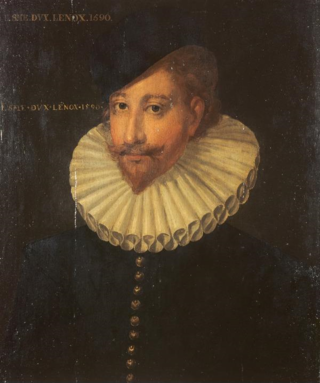
Esmé Stewart, 1st Duke of Lennox, 1st Earl of Lennox, 6th Seigneur d'Aubigny, of the Château d'Aubigny at Aubigny-sur-Nère in the ancient province of Berry, France, was a Catholic French nobleman of Scottish ancestry who on his move to Scotland at the age of 37 became a favourite of the 13-year-old King James VI of Scotland, of whose father, Henry Stewart, Lord Darnley, he was a first cousin. Despite his conversion to Calvinism he was never trusted by the Scots and returned to France where he ended his days. Sir James Melville described him as "of nature upright, just and gentle". He was the first to popularise the firstname Esmé in the British Isles.
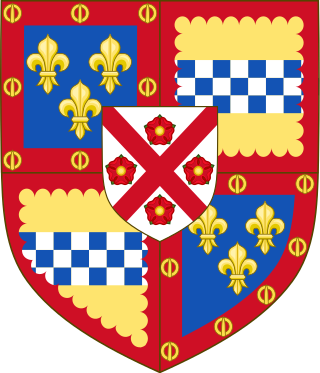
Esmé Stewart, 3rd Duke of Lennox, KG, 7th Seigneur d'Aubigny, lord of the Manor of Cobham, Kent, was a Scottish nobleman and through their paternal lines was a second cousin of King James VI of Scotland and I of England. He was a patron of the playwright Ben Jonson who lived in his household for five years.
James Livingston, 1st Earl of Newburgh was a Scottish peer who sat in the House of Commons of England from 1661 to 1670. He supported the Royalist cause in the English Civil War.
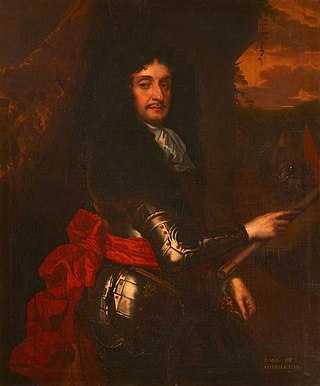
John Middleton, 1st Earl of Middleton was a professional soldier and mercenary from Kincardineshire in Scotland. Beginning his career in the Thirty Years War, during the Wars of the Three Kingdoms he fought for the Covenanters and Parliamentarians until 1648, when he switched sides to the Royalists.
Stewart of Darnley, also known as the Lennox Stewarts, were a notable Scots family, a branch of the Clan Stewart, who provided the English Stuart monarchs with their male-line Stuart descent, after the reunion of their branch with the royal Scottish branch.

Duke of Aubigny is a title that was created in the Peerage of France in 1684. It was granted by King Louis XIV of France to Louise de Kérouaille, the last mistress of King Charles II of England, and to descend to Charles's illegitimate issue by her, namely to the descendants of Charles Lennox, 1st Duke of Richmond, 1st Duke of Lennox (1672–1723) of Goodwood House in Sussex. Louis XIV also granted her the Château de la Verrerie, a former secondary seat of the Stewart Seigneurs d'Aubigny, Franco-Scottish cousins of the Stewart monarchs, seated from 1422 to 1672 at the Château d'Aubigny in the parish and manor of Aubigny-sur-Nère in the ancient province of Berry in France.

Lord Bernard Stewart was a Franco-Scottish nobleman and a third cousin of King Charles I of England, both being descended in the male line from John Stewart, 3rd Earl of Lennox. He served as a Royalist commander in the English Civil War, during which he was killed aged 22 and unmarried.
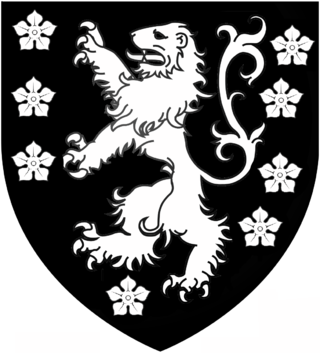
Katherine Clifton, 2nd Baroness Clifton, was an English-born Scottish peer.

Colonel Thomas Blagge served as Groom of the Chamber to Charles I and his son Charles II. He fought for the Royalists during the Wars of the Three Kingdoms, and following the Execution of Charles I in January 1649, joined the exiled Stuart court in France. He helped Charles II evade capture after defeat at Worcester in 1651, and although arrested himself, escaped from the Tower of London. He remained in exile for the next decade, fighting in the Franco-Spanish War during the brief Royalist alliance with Spain.

Sir Edward Villiers was an English Royalist soldier and courtier. Part of the powerful Villiers family, he was a friend of Edward Hyde, chief advisor to Charles I and Charles II from 1641 to 1668.
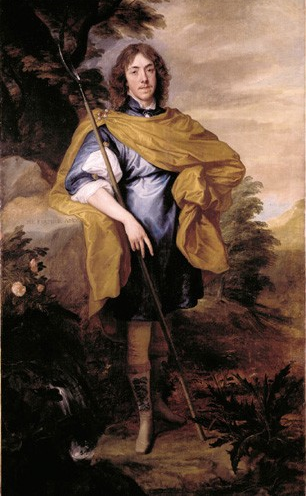
Lord George Stewart, 9th Seigneur d'Aubigny was an Anglo-Scottish nobleman of French descent and a third cousin of King Charles I of England. He supported that king during the Civil War as a Royalist commander and was killed, aged 24, at the Battle of Edgehill in 1642.

The Battle of Preston, fought largely at Walton-le-Dale near Preston in Lancashire, resulted in a victory for the New Model Army under the command of Oliver Cromwell over the Royalists and Scots commanded by the Duke of Hamilton. The Parliamentarian victory presaged the end of the Second English Civil War.

Charles Cavendish (1620–1643) was an English royalist general, killed at the battle of Gainsborough.
Henry O'Brien, Lord Ibrackan, or Lord O'Brien, styled Hon. Henry O'Brien until 1657, was an Irish nobleman and politician. He was the son of Henry O'Brien, 7th Earl of Thomond, and his first wife, and cousin, Anne O'Brien.

Eusebius Andrews, December 1606 to 22 August 1650, was a London lawyer and Royalist during the Wars of the Three Kingdoms, executed for his part in a 1650 plot to restore Charles II of England. A prominent supporter of the Crown since the early 1630s, he was a determined conspirator who organised a number of Royalist risings in Cambridgeshire between 1642 and 1650.

Sir Thomas Byron was a Royalist officer during the First English Civil War. He had effective command of the Prince of Wales' cavalry regiment during the first year of the war, including at the Battle of Edgehill in late 1642. A few months later he led a charge during the Battle of Hopton Heath after the death of the Earl of Northampton, which helped the Royalists capture enemy artillery pieces. Byron was attacked by one of his own soldiers over a pay dispute in December 1643, and died from his wounds on 5 February 1644.

















